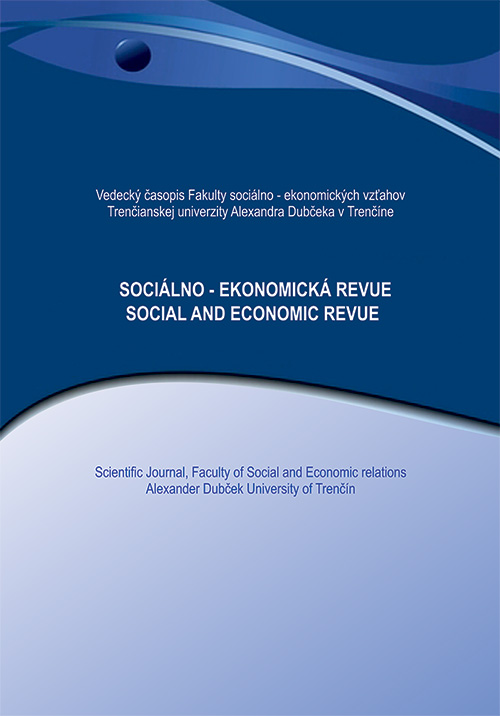FEMALE LEADERSHIP IN THE TEQUILA INDUSTRY IN MEXICO
The tequila industry has a high significance in the Jalisco economy, due to its region of origin since the 17th century and in the activities of production, packaging, verification, tourism and commercial representation offices that are concentrated in the state of Jalisco. In Mexico, tequila is the drink that has a distinctive seal worldwide. According to data from the National Tequila Regulatory Council, in 2022 only 11 of the 174 registered distilleries were run by women . It is a dynamic industry that, until recently, was identified as extremely masculine, associated with the image of men on horseback . Today , directly or indirectly, the industry engages some 300,000 people . The objective was to analyze the production companies that are run by women, in order to promote and publicize some aspects of their business. A documentary research was carried out with a qualitative-descriptive approach, secondary sources were consulted . conclusions. The owners of the tequila factories in Jalisco are distinguished by a new vision about how to achieve more equity in this area, a change that began a few years ago. They lead with a vision that seeks a transformation in the sector and in family businesses.
Release: 2023/1 Pages: 49-56 JEL classification: M1, M10
DOI: https://doi.org/10.52665/ser20230106
Keywords: Companies, female leadership, brands, tequila
Section:
Contacts:
Dr. María del Carmen Navarrete Torres,
Juárez Autonomous University of Tabasco.
Av. Universidad s/n,
Magisterial,
86025 Villahermosa,
Tab. Mexico.
Cell 9933112183
mallynav@yahoo.com.mx
Literature:
Barberá, E., Ramos, A. and Sarrió, M. (2000). Women managers before the third millennium: the NOWDI XXI project. Papers of the psychologist, 75, 46-52.
Berenger , G., Cerver , E., Fernández, A. & Torcal, VR (2004). The managerial style of women and its influence on the management of the work team in Valencian cooperatives. CIRIEC-Spain, Public, Social and Cooperative Economy Magazine, nº 50, pp. 123-149.
Bucheli, M. and Sanroman, G. (2005). Women's Wages in Uruguay Is there a Glass Ceiling? Magazine of Economy of the Central Bank of Uruguay, 12(2), pp. 63-88.
National Chamber of the Tequila Industry. (May 28, 2023). tequileros.org. Retrieved from What is it?: http://www.tequileros.org/main_es.php
harlo Molina, MJ, & Núñez Torrado, M. (2012). The female manager in large Spanish companies: profile, skills and management styles. Management Studies , 28 (124), 87-105.
Chinchilla, N.; Leon , C. (2004). female ambition. How to reconcile work and family. Madrid: Santillana General Editions SL
Sarrió, M., Barberá, E., Ramos, A. and Candela, C. (2002). The glass ceiling in the professional promotion of women. Journal of Social Psychology (1 70).
Tequila Regulatory Council (2022, July 20). The tequila agribusiness grows at double digits during the first half of 2022 [press release]. https://www.crt.org.mx/descargas/AgroindustriaTequilera2022.pdf
Tequila Regulatory Council (undated). Protection of tequila internationally. Retrieved from https://www.crt.org.mx/index.php?option=com_content&view=article &id=78&Itemid=340
Contreras Torres, F., Pedraza Ortiz, JE, & Mejía Restrepo, X. (2012). Women and business leadership. Diversitas: Perspectives in Psychology , 8 (1), 183-193.
Square, I., Navas, M. and Molero, F. (2006). Women and leadership: psychosocial keys to the glass ceiling. Madrid: Sanz and Torre
De León, EA, & Montero, C. (2021). Female leadership and its impact on job performance in the Latin American context. Costa Rican Journal of Psychology, 40(1), 95-112.
Official Gazette of the Federation (DOF). (2000). Extract from the request for modification to the General Declaration of Protection of the Designation of Origin Tequila https://www.dof.gob.mx/nota_detalle.php?codigo=2052018&fecha=09/03/
Duarte Cruz, JM, & García-Horta, JB (2016). Equality, Gender Equity and Feminism, a historical look
Eagly, AH, & Carli, LL (2007). Through the labyrinth : The truth about how women become
Eagly, AH, & Kite , ME (1987). Are stereotypes of nationalities applied to both women and men ?. Journal of personality and social psychology , 53 (3), 451.
Hoyt , C. L. (2010). Women, Men , and Leadership: Exploring the Gender Gap at the Top. Social and Personality psychology Compass , 4(7), 484–498. https://doi.org/10.1111/j.1751-9004.2010.00274.xteq _uileros.org. Retrieved from What is it?: http://www.tequileros.org/main_es.php
Hoyt , C.L., & Murphy, S.E. (2016). Managing to clear the air: Stereotype threat , women, and leadership. The leadership quarterly , 27 (3), 387-399.
International Business Report (IBR) by Grant Thornton the conquest of women's rights. CS Magazine , (18), 107-158. https://doi.org/10.18046/recs.i18.1960leaders . _ harvard business
Morrison, AM, White, RP, & Van Velsor , E. (1987). breaking the glass Ceiling : Can Women Reach The Top Of America's Largest corporations ? . Pearson Education .
Ramos, MA (2005). Women and leadership: A new way of leading (Vol. 120). University of Valencia
Stogdill , R.M. (1950). Leadership, membership and organization . psychological bulletin , 47 (1), 1.
Thornton, G. (2017). International Business Report (IBR) 2017. Women in business Diverse visions, joint solutions .
Velásquez Pérez, SM (2018). Stereotypes of gender roles and attitudes towards women organizational leaders, from the perspective of the women themselves.
Segovia, AO, & Pérez, MDM (2004). Professional success from a gender perspective: Proposal for a model. Journal of General and Applied Psychology: Magazine of the Spanish Federation of Psychological Associations , 57 (2), 193-208. Perspective of women themselves.


